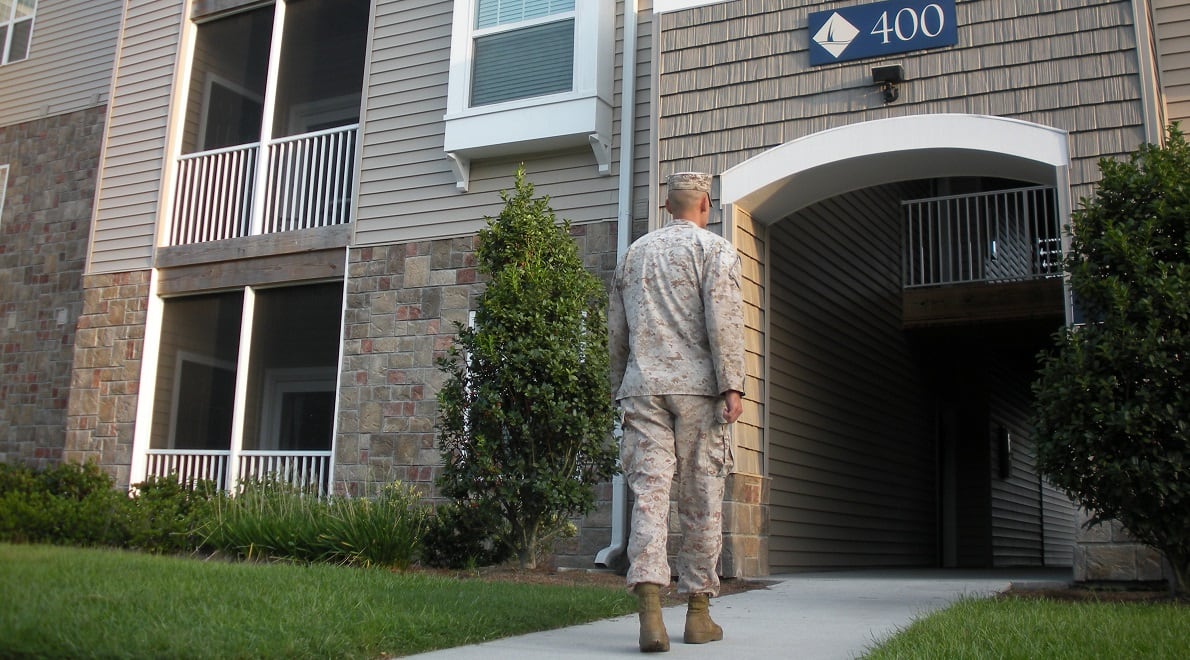Editor’s note: This is one in a series of pieces that make up the Military Times 2018 Benefits Guide. Read or download the entire e-book here.
Depending on your rank, location and dependents, your monthly housing allowance may outpace your basic pay. Here’s how this big benefit works, a bit about related benefits, and more:
What it is: Basic Allowance for Housing is the modern version of a program dating from 1878 under which service members are provided government quarters or a cash substitute when quarters are unavailable.
As with most other forms of military pay, BAH, which is not taxable, increases with rank and varies according to location and whether a person has dependents.
Eligibility: Any active-duty service member stationed in the U.S. who is not provided with government housing is eligible. Those overseas are eligible for an Overseas Housing Allowance, which is calculated under a separate formula; service members can find out their OHA rate here.
The details: BAH rates had been designed to cover 100 percent of the average rental costs for service members. That changed in 2014, when it was scaled back to 99 percent under a law that calls for lowering it to 95 percent by 2019. It’s at 96 percent this year; the rest of a service members’ housing costs are expected to come out of pocket.
The rates vary widely based on rank and the local real estate market. A junior enlisted soldier at Fort Bliss, Texas, may get less than $1,000 a month, while a midlevel officer in San Diego will pocket more than $3,000.
RELATED

Service members are protected from falling rates under a policy that allows them to receive BAH at their current rate for as long as they remain at their location, should the rates drop. However, they will receive the new, lower rate if they are demoted or if their dependency status changes, in which case they’d receive the current rate for their new status.
If rates rise in a location, all service members receive the higher rates regardless of when they arrived.
Two rates are set for each location by a survey of rental costs: The with-dependents rate goes to personnel with at least one dependent and does not increase for additional family members. Single people with no dependents receive the without-dependents rate.
If a husband and wife are both on active duty and have a child, the higher-ranking spouse gets BAH at the with-dependents rate and the other gets the without-dependents rate. In dual-military couples without children, the husband and wife both get the without-dependents rate.
Action items: Find your current BAH rate by entering your ZIP code here. Get more details, including answers to frequently asked BAH questions, here.
RELATED BENEFITS
BAH RC/T, or Reserve Component/Transit, is a non-locality housing allowance for members in particular circumstances, for example, reservists on active duty for 30 or fewer days. It also applies when a member is in transit from selected areas where no prior BAH rate exists (such as overseas). It does not vary by geographic location. BAH RC/T was set based on the old Basic Allowance for Quarters, or BAQ, which was based on the national average for housing.
BAH-Diff, or Differential, is the housing allowance amount for a member who is assigned to government housing but is authorized a basic allowance for housing solely by reason of the member’s payment of child support. A member is not entitled to BAH-Diff if the monthly rate of that child support is less than the BAH-Diff.
Current rates for BAH RC/T and BAH-Diff are available online here.








